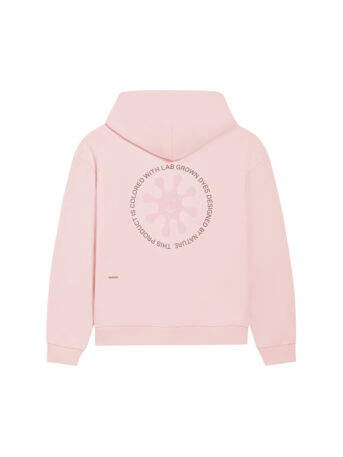
16 Nov The dye that makes this tracksuit pink was grown in a lab
If you’ve visited Yellowstone National Park, you might have noticed that some of the geysers look pink: It’s because they’re colored by ancient bacteria that evolved to live in the scalding water. A startup called Colorifix has borrowed the DNA code from those bacteria to make a new biology-derived dye that’s more sustainable. That dye is now in use in a limited-edition tracksuit made by Pangaia, a materials science startup reimagining how to make better clothing.

Synthetic dyes are often made from petrochemicals and toxic chemicals, making both their production and use hazardous and polluting to workers and the environment. They also require enormous amounts of water throughout their production process. Natural dyes are better, but still require added chemicals to make the dye adhere to the fabric and avoid fading in the sun. Farming the ingredients used in the dyes can have other environmental impacts. “Biofabricated” dyes like those made by Colorifix, on the other hand, can avoid those challenges.

Colorifix uses microbes that are programmed with DNA to make particular colors. It’s the same process used to make insulin and some other products, including the animal-free dairy protein produced by companies like Perfect Day. “By instructing them to produce naturally occurring pigments and growing them via fermentation—the same way beer is brewed—Colorifix is able to scale natural pigments without any of the specialist-intensive agricultural and environmental impact of scaling traditional natural dye processes,” says Orr Yarkoni, the company’s CEO and cofounder.
The conventional dye process takes between five and eight hours at high temperatures, and often requires as many as five washes; Colorifix’s process takes three hours and a single wash. That means that it can save energy and water.

According to Yarkoni, as long as a color occurs in a living organism, the company could likely reproduce it. “One of the most exciting elements of the technology is that it can access a huge range of colors in nature that are currently inaccessible due to location, quantity, or because they’re produced by organisms invisible to the human eye,” he says. “As long as we can access the DNA blueprint for these pigments, they have the potential to be transformed into colorful industrial dyes without ever harming the source.”

Pangaia’s new products, a hoodie and track pant in Colorifix’s pink and a blue (from the DNA in silk), are the first to use the dye commercially. Even at a small scale of production, the company says that the cost of the new dye is within the range of other products—less expensive than the best other alternatives, and around 20% more expensive than the cheapest dyes on the market.
Yarkoni hopes that his biotech company can help bring about broad changes in textile manufacturing. “In order to become more sustainable, we believe the industry needs to change and become more vertically integrated,” he says. “The integration of pigment production on-site provides significant savings not only on water, but carbon emissions and costs from additional, unnecessary shipping.”
Source: Fast Company




Sorry, the comment form is closed at this time.